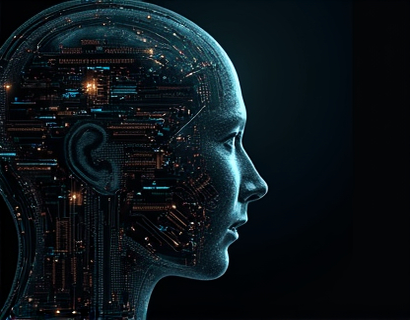Decentralized Identity 101: Empowering Your Online Presence in the Web3 Era
In the rapidly evolving landscape of the Web3 era, understanding and mastering decentralized digital identity has become crucial for both individuals and businesses. This guide aims to provide clear insights and practical tools for Web3 enthusiasts and digital identity seekers to establish a secure and user-friendly online presence. Decentralized identity, often referred to as DID, is a paradigm shift from the traditional centralized identity models, offering greater control, privacy, and security.
Understanding Decentralized Identity
Decentralized identity is a system where individuals and entities manage their own digital identities without relying on central authorities such as governments or corporations. Unlike traditional identity systems where a central entity holds and controls all identity data, DID allows users to own and manage their identity information autonomously. This shift is driven by the need for enhanced privacy, security, and interoperability in the digital world.
Key Principles of Decentralized Identity
The core principles of decentralized identity include self-sovereignty, interoperability, and security. Self-sovereignty means that users have full control over their identity data, deciding who can access it and for what purpose. Interoperability ensures that identity information can be seamlessly shared and verified across different platforms and services. Security is paramount, with decentralized systems employing advanced cryptographic techniques to protect user data from unauthorized access and breaches.
Benefits of Decentralized Identity
The adoption of decentralized identity brings numerous benefits. First, it empowers users by giving them control over their personal data, reducing the risk of data breaches and misuse. Second, DID enhances privacy by allowing users to share only the necessary information for a specific service, minimizing data exposure. Third, it promotes interoperability, enabling seamless interactions across various decentralized applications and platforms. Lastly, decentralized identity reduces dependency on centralized authorities, fostering a more democratic and equitable digital ecosystem.
Components of a Decentralized Identity
A decentralized identity consists of several key components that work together to create a secure and user-friendly online presence. These components include:
- Decentralized Identifier (DID): A unique identifier that represents an entity in the decentralized web. DIDs are managed by the entity themselves and are not controlled by any central authority.
- Verifiable Credentials: Digital documents that prove ownership of a particular attribute or right. These credentials are issued by trusted entities and can be verified by anyone without revealing the underlying data.
- Wallets: Software or hardware devices that store and manage DIDs and verifiable credentials. Wallets ensure that users can securely access and use their identity information across different services.
- Identity Providers (IdPs): Entities that issue verifiable credentials to users. These can be individuals, organizations, or community-driven groups, adding a layer of trust and verification to the identity ecosystem.
Creating a Decentralized Identity
Creating a decentralized identity involves several steps that ensure the process is secure and user-friendly. Here’s a step-by-step guide to get started:
1. Choose a Wallet: Select a reliable wallet that supports decentralized identities. Popular options include MetaMask, WalletConnect, and Bespoke. These wallets provide a secure environment to manage your DID and credentials.
2. Generate a DID: Within your wallet, generate a new decentralized identifier. This DID will serve as your unique digital address. Ensure that you securely store the private key associated with your DID, as it is crucial for accessing and managing your identity.
3. Issue Verifiable Credentials: Obtain verifiable credentials from trusted identity providers. These credentials can include digital versions of your passport, driver’s license, educational certificates, or any other form of identification. Ensure that the issuer is a reputable and trusted entity.
4. Store Credentials in Your Wallet: Import the verifiable credentials into your wallet. Most wallets provide a user-friendly interface to add and manage these credentials securely.
5. Test and Verify: Before using your decentralized identity widely, test it with compatible decentralized applications (dApps) to ensure everything works smoothly. Verify that your credentials are accepted and can be presented as needed.
Using Decentralized Identity in Daily Life
Once you have set up your decentralized identity, integrating it into your daily online activities is straightforward. Here are some practical scenarios:
1. Online Services and Applications: When signing up for or accessing online services, you can use your decentralized identity to create accounts without providing unnecessary personal information. Services like social media platforms, e-commerce sites, and streaming services can verify your identity using your DID and credentials.
2. Decentralized Finance (DeFi): In the realm of DeFi, decentralized identity ensures that you can securely access financial services, lend or borrow assets, and manage your digital assets without relying on centralized intermediaries.
3. Voting and Governance: Decentralized identity plays a crucial role in secure and transparent voting systems and governance platforms. It ensures that only authorized individuals can participate and that their votes are verifiable and tamper-proof.
4. Digital Content Creation and Monetization: Creators can use decentralized identity to prove ownership of digital content and monetize it through blockchain-based platforms. This ensures that creators receive fair compensation and maintain control over their work.
Challenges and Considerations
While decentralized identity offers numerous advantages, there are challenges and considerations to keep in mind:
1. User Education: Many individuals are still unfamiliar with decentralized technologies. Educating users about the benefits and proper usage of DID is essential for widespread adoption.
2. Interoperability Standards: Ensuring that different decentralized identity systems can work together seamlessly requires the development and adoption of common standards and protocols.
3. Regulatory Environment: The legal and regulatory landscape for decentralized identity is still evolving. Users and developers need to stay informed about local and international regulations to comply with legal requirements.
4. Security Best Practices: Users must adopt best practices for securing their wallets and private keys to prevent unauthorized access to their identity data.
Future of Decentralized Identity
The future of decentralized identity is promising, with ongoing developments aimed at enhancing user experience and expanding adoption. Key areas of focus include:
1. Enhanced User Interfaces: Developing more user-friendly interfaces and tools to make decentralized identity accessible to a broader audience.
2. Wider Adoption by Mainstream Services: More established online services and platforms are expected to integrate support for decentralized identity, making it a standard feature.
3. Cross-Chain Interoperability: Efforts to enable seamless identity verification and data sharing across different blockchain networks will enhance the utility and convenience of decentralized identity.
4. Regulatory Clarity: As the ecosystem matures, clearer regulations and guidelines will emerge, providing a more stable and predictable environment for users and developers.
Conclusion
Decentralized identity represents a significant advancement in the way we manage our online presence. By empowering individuals to control their personal data and interact securely and privately, DID is reshaping the digital landscape. Whether you are a Web3 enthusiast or a digital identity seeker, understanding and embracing decentralized identity is essential for navigating the Web3 era with confidence and security.










































